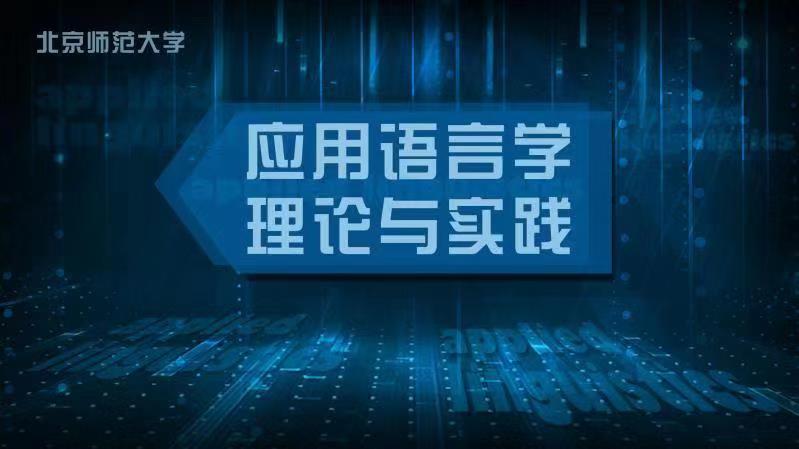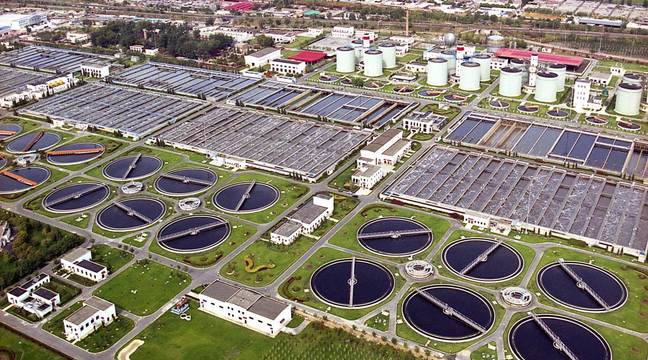
当前课程知识点:Water and Wastewater Treatment Engineering: Biochemical Technology > Chapter 2 Activated sludge process > Section 2.7 Operation and management of active sludge process > Section 2.7.1 Operation and management of active sludge process (1)
返回《Water and Wastewater Treatment Engineering: Biochemical Technology》慕课在线视频课程列表
返回《Water and Wastewater Treatment Engineering: Biochemical Technology》慕课在线视频列表
同学们好,我们来学习第二章的最后一节
也就是第七节,活性污泥法的运行管理
主要涉及三个方面的内容
第一是启动与试运行
第二是运行与管理
第三是常见问题与对策
关于活性污泥的启动与运行,实际上涉及到这几个问题
第一就是活性污泥的培养与驯化
既然是活性污泥法,当然我们首先需要有足够量的活性污泥
要有活性污泥,首先需要有接种污泥
接种污泥一般来自于同类污水厂的剩余污泥
或者在最初的时候,活性污泥法在国内的厂
或者在世界上当时刚有活性污泥法的时候
没有那么多的同类的污水厂
我们可以直接用粪便污水来进行培养
具体的培养方法,可以有间歇地培养法
就是通过间歇实验,一次性的注水
静止曝气,沉淀以后排除上清液
然后再进水
这只是第一种,间歇培养法
第二种是流量分阶段的直接培养法
逐渐提高流量
第三种是全流量的连续直接培养法
当活性接种污泥的量足够多的时候
我们就可以直接采用第三种,全流量的连续直接培养法
在处理一些工业废水的时候
我们可能就需要涉及到活性污泥的驯化
因为工业废水中间,可能含有一些生活污水中间没有的一些有机物
甚至是有一些是含有一定的毒性的有机物
那么就需要对活性污泥进行驯化
驯化方法主要有异步驯化法和同步驯化法
具体的内容,我们在后面关于这个工业废水处理中间,再来做具体的介绍
完成了活性污泥的培养之后
我们对整个活性污泥系统,就要开始进行试运行
试运行的目的,主要是来确定最佳的运行条件
因为在前面,我们虽然做了设计
确定或者说是选择了设计参数
但是,实际的情况跟设计的情况可能会有差别
所以我们需要通过这样的一个试运行的环节
来确定真正的最佳的运行条件
作为变数考虑的因素,我们需要有
第一,活性污泥的浓度,也就是曝气池中MLSS的浓度
然后,空气量,以及废水的注入方式
第二,是需不需要氮和磷等营养元素的投加
因为在处理一些工业废水的时候
可能废水中间含有的氮和磷不够
所以,我们需要来确定它的最佳的投加量
第三点是如果是采用吸附再生法
我们要确定吸附和再生的时间比
根据上述各种参数的组合运行结果
我们寻找和确定出最佳的运行条件
使这个活性污泥系统按照最佳的条件进行运行
这就完成了我们所谓的试运行
随后,整个活性污泥厂就会进入稳定或者日常的运行和管理
关于日常的运行和管理
我们首先,需要对曝气池进行运行管理
在曝气池的运行管理过程中间,我们需要检测各种数据
包括水温,pH值,溶解氧,以及SV、MLSS、MLVSS以及SVI
还有它的回流污泥的浓度,以及它的污泥负荷,容积负荷
还有它的水力停留时间HRT,污泥停留时间,或者是污泥龄SRT
对于第二点,我们是要对曝气池中的活性污泥进行镜检观察
主要是我们前面已经讲过的是对其中的原生动物或者是后生动物
这种作为指示性生物进行观察
通常情况下,活性污泥如果生长正常的话
它的出水的水质也非常好的情况下
它主要的原生动物是纤毛虫,如钟虫
当活性污泥的生长状况不好时,有机负荷高
或者溶解氧含量低的时候呢,它的细菌会呈游离状
它的这个菌胶团的形成的状态不够好
而且出现的原生动物,主要是一些游泳型的纤毛虫,像草履虫或者肾形虫等
当溶氧不足,出现原生动物的数量就会少
当曝气过度,活性污泥的絮体就呈细小的分散状态
出现的原生动物,主要是一些小型的变型虫
所以,我们可以通过日常的微生物的镜检观察
来发现活性污泥的运行状况
随后,第三点就是要对曝气池中的溶解氧
以及,跟供气量之间的相互调节
因为整个活性污泥系统来说
供气所占的电耗占全厂电耗的一半以上,一般会在50%到60%
即要保证充足的供氧
那么要求的就是曝气池的出口的溶解氧,要大于2mg/L
同时,又要保证足够的混合搅拌
要确保活性污泥在曝气池中间,处在悬浮状态
因此,我们通过这个实际的运行和调整,来确定好最佳的气水比
对于水质和水量相对稳定的大型污水厂来说
一般需要在每年的春季和秋季各调节一次
随后,要对活性污泥的SV和SVI进行测定
并且要适当的要进行调节
因为,我们首先是需要维持曝气池中间的稳定的MLSS的浓度
通过SV作为评定污泥浓度的一个指标
确定最佳的SV值
第四项就是要来对SV和SVI来进行测定
并且进行调节
一般来说,它的目的主要是维持曝气池中间稳定的MLSS值
我们前面也讲过,SV值不能完全的来作为评定MLSS的指标
有时候我们要结合这个SVI值来进行评判
我们也可以通过调节剩余污泥的排放量来调节整个系统的SV或者是SVI值
通过剩余污泥的排放和回流污泥的调节与控制
我们能够调节整个系统的SV和SVI值
在活性污泥系统中间,第二个关键的构筑物就是二沉池
因此我们对二沉池的运行管理也是非常重要的
对于二沉池来说,主要的水质管理监测的项目有
出水的pH值,它的出水的透明度,以及悬浮物的含量SS
以及BOD,COD,这些关键性的参数
因为二沉池的出水,通常的话,会作为一个沉池污区厂的最终的出水
所以这些指标要确保能够达标
为了保证它们,二沉池还有一些关键的运行参数
像表面水力负荷,以及出水堰的负荷
同时,我们也要对二沉池中间的HRT进行控制
一般来说,HRT会在1.5到2.5h
但是实际情况下,有的时候会在三个小时以上
出水中间的大肠菌的数值也是需要进行控制的
一般需要小于1000个/mL
-Section 0.1 Development Status of Wastewater Treatment Process
--Section 0.1 Development Status of Wastewater Treatment Process
-Section 0.2 Typical Processes of Wastewater Biological Treatment
--Section 0.2 Typical Processes of Wastewater Biological Treatment
-Section 1.1 Principles of wastewater aerobic biological treatment
--1.1 Principles of wastewater aerobic biological treatment
-Section 1.2 Principles and determination of wastewater biodegradability
--1.2 Principles and determination of wastewater biodegradability
-Section 1.3 Principles of wastewater anaerobic biological treatment
--Section 1.3.1 Principles of wastewater anaerobic biological treatment(1)
--Section 1.3.2 Principles of wastewater anaerobic biological treatment(2)
-Section 1.4 Principles of wastewater biological nitrogen removal
--Section 1.4 Principles of wastewater biological nitrogen removal
-Section 1.5 Principles of wastewater biological phosphorus removal
--Section 1.5 Principles of wastewater biological phosphorus removal
-Chapter 1 Homework
-Section 2.1 Basic concept of activated sludge process
--Section 2.1.1 Basic concept of activated sludge process
--Section 2.1.2 Basic concept of activated sludge process
-Section 2.2 Growth rule of activated sludge and its application
--Section 2.2 Growth rule of activated sludge and its application
-Section 2.3 Running mode of activated sludge process
--Section 2.3.1 Running mode of activated sludge process(1)
--Section 2.3.2 Running mode of activated sludge process(2)
-Section 2.4 Kinetics of active sludge process
--Section 2.4.1 Kinetics of active sludge process(1)
--Section 2.4.2 Kinetics of active sludge process(2)
--Section 2.4.3 Kinetics of active sludge process(3)
--Research and Development of Kinetic Model of Activated Sludge Process
-Section 2.5 Principle, calculation and equipment of aeration
--Section 2.5.1 Principle, calculation and equipment of aeration(1)
--Section 2.5.2 Principle, calculation and equipment of aeration(2)
-Section 2.6 Designing of activated sludge process
--Section 2.6 Designing of activated sludge process
-Section 2.7 Operation and management of active sludge process
--Section 2.7.1 Operation and management of active sludge process (1)
--Section 2.7.2 Operation and management of active sludge process (2)
-Chapter 2 Homework
-Section 3.1 Basic principle of biofilm
--Section 3.1 Basic principle of biofilm
-Section 3.2 Biofilter process
--Section 3.2.1 Biofilter Process (1)
--Section 3.2.2 Biofilter process (2)
--Section 3.2.3 Biofilter process (3)
-Section 3.3 Biodisk process
-Section 3.4 Biological contact oxidation process
--Section 3.4 Biological contact oxidation process
-Section 3.5 Aerobic biological fluidized bed process
--Section 3.5 Aerobic biological fluidized bed process
-Chapter 3 Homework
-Section 4.1 Oxidation ditch process
--Section 4.1 Oxidation ditch process
-Section 4.2 A-B process
-Section 4.3 SBR process
-Section 4.4 MBR process
-Chapter 4 Homework
-Section 5.1 Overview and characteristics of development of anaerobic biological treatment
--Section 5.1 Overview and characteristics of development of anaerobic biological treatment
-Section 5.2 Anaerobic digester
--Section 5.2 Anaerobic digester
-Section 5.3 Anaerobic contact process and anaerobic filter process
--Section 5.3 Anaerobic contact process and anaerobic filter process
-Section 5.4 UASB process
-Section 5.5 Other anaerobic biological treatment process
--Section 5.5 Other anaerobic biological treatment process
-Section 5.6 Operation management of anaerobic biological treatment process
--Section 5.6 Operation management of anaerobic biological treatment process
-Chapter 5 Homework
-Section 6.1 Introduction
-Section 6.2 Biological nitrogen removal process and technology
--Section 6.2 Biological nitrogen removal process and technology
-Section 6.3 Biological phosphorus removal process and technology
--Section 6.3 Biological phosphorus removal process and technology
-Section 6.4 Simultaneous nitrogen and phosphorus removal process
--Section 6.4 Simultaneous nitrogen and phosphorus removal process
-Chapter 6 Homework
-Section 7 Natural biological treatment process
--Section 7 Natural biological treatment process
-Chapter 7 Homework
-Section 8.1 Source, nature and treatment of sludge
--Section 8.1 Source, nature and treatment of sludge
-Section 8.2 Sludge thickening and digestive stability
--Section 8.2 Sludge thickening and digestive stability
-Section 8.3 Sludge conditioning, dehydration and incineration
--Section 8.3 Sludge conditioning, dehydration and incineration
-Chapter 8 Homework
-Section 9 Wastewater Discharge and Reuse
--Section 9 Wastewater Discharge and Reuse
-Chapter 9 Homework

